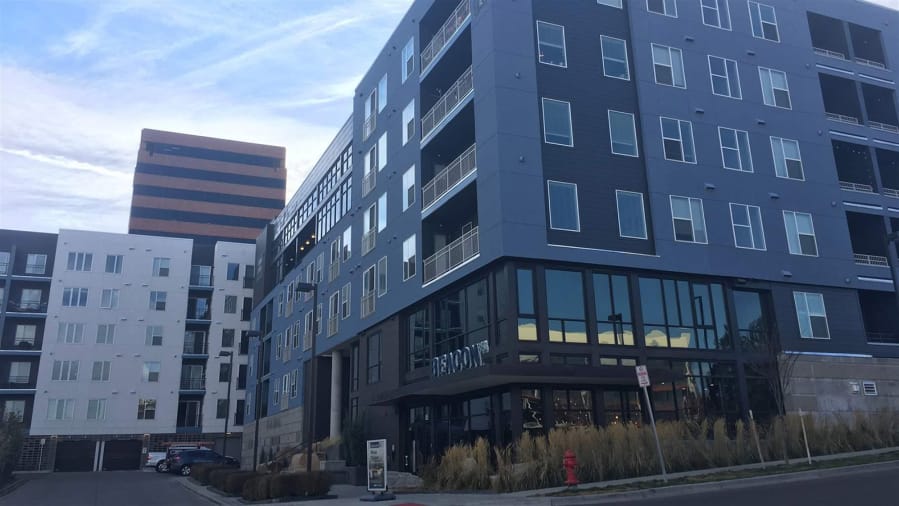DENVER — Colorado’s job growth has a downside. Along the urban corridor where the Rocky Mountains meet the plains, home prices are climbing, luxury apartments are multiplying, and commuters are getting stuck in traffic. Parking spaces on main streets and popular trailheads are jam-packed.
Some locals, frustrated with the pace of development, hope to slow it down.
“Every place that you go, it’s overwhelmed by people, just like California,” said Daniel Hayes, a rental home manager based in Golden who has proposed a statewide ballot initiative to restrict new housing construction in most urban areas, which the Colorado Supreme Court has yet to approve for circulation. “Is that what we want?”
Anti-growth feeling is bubbling up in some Western communities — particularly in cities adding people and housing faster than the national average — even as city leaders and affordable housing advocates call for more homebuilding and downtown density to combat traffic and rising home prices.
In Boise, Idaho, a mayoral candidate this year called for building a wall around the state to keep newcomers out (particularly wealthy Californians). Although that candidate didn’t advance to the runoff, managing growth remains a key question in local politics, said Charles Hunt, an assistant professor of political science at Boise State University.
“Regardless of where you stand on it,” he said, “the question of growth has been the fundamental policy question in the Treasure Valley over the last five years.”
In Salt Lake County, Utah, residents last year convinced their mayor to veto a huge apartment and town house project. Utah added residents faster than any other state during the past decade, according to the U.S. Census Bureau, and Salt Lake County’s population jumped by 12 percent.
In tiny Elizabeth, Colo., anti-growth activists are trying to recall all the town’s elected officials for approving development projects they fear will turn Elizabeth — population 1,416 — into the next Denver exurb boomtown. Over the past decade, more than 10,000 people moved to a nearby town, Parker, boosting its population by close to 23 percent.
To be sure, a nascent “yes in my backyard” movement has led to laws that promote further development in some states, such as Oregon’s new law that allows duplexes to be built in lots zoned for single-family homes.
In California, Democratic Gov. Gavin Newsom last month signed legislation to speed up building-permit approval and stop local governments from limiting new home construction.
But proponents of such changes still must contend with not-in-my-backyard residents who fear the new laws will encourage more luxury apartments and pricey town houses rather than truly affordable housing.
Pressure from some California residents and local leaders has hobbled another Democratic-led bill that would override local zoning to allow more housing construction near public transit and job hubs.
“Right now, what these bills are doing is — it’s not town planning, it’s town cramming,” said Keith Gurnee, a member of the board of directors of Livable California, a group that opposes the bill. Gurnee said his group wants local governments to retain zoning control.
While the backlash to growth is a national phenomenon, the trend may well be more prevalent in the West, said Megan Lawson, a researcher for Headwaters Economics in Bozeman, Mont.
“The West is growing faster, in terms of jobs and income, than the rest of the U.S.,” she said. “But at the same time, most of that growth is concentrated in the big urban areas.”
Colorado is the only place so far where a statewide limit on growth has been considered and might make next year’s ballot.
Statewide housing measures are rare, said Josh Altic, a project director for Ballotpedia, an election encyclopedia. “It’s really, at its heart, a local issue,” he said. Local ballot measures that address housing and zoning are more common, he said, and often spurred by a project that ticks off locals.
Hayes, who championed a ballot measure that capped residential housing growth in Golden in the 1990s, is now trying to get a statewide measure on the November 2020 ballot that would set a 1 percent annual growth limit on new housing in Boulder, Colorado Springs, Denver, Fort Collins and surrounding cities and suburbs. After two years, residents could vote to lift the cap through a local ballot initiative or referendum.
He said his ballot measure would give communities breathing room to address challenges such as growing school enrollment and heavy traffic.



